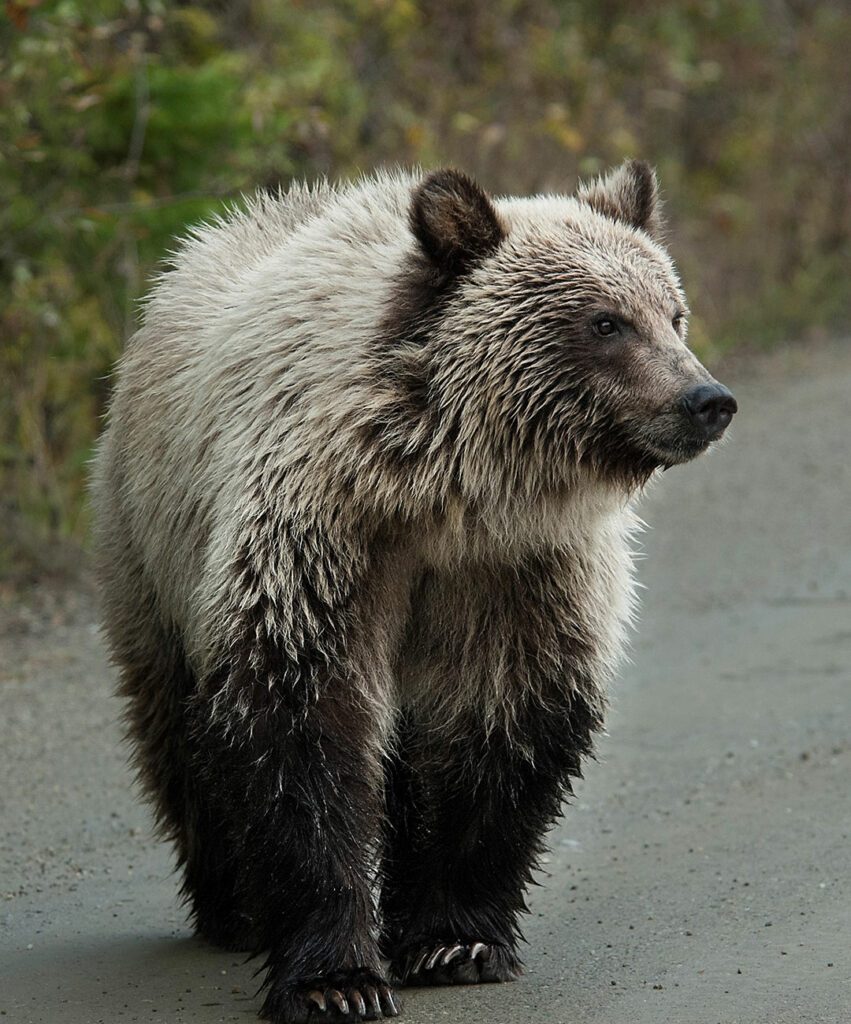piq kiʔláwnaʔ is the Sinixt word for “white grizzly”. However, very few of this unusual colour-phase of the grizzly are really “white.” Unlike the coastal spirit bears (Mosgm’ol) whose coats are different shades of white (often with orange or yellow on the back), piq kiʔláwnaʔ’s comes in many different white-or light-phase colour patterns. Other recognized grizzly bear colour pattern names such as the interior “Silvertip” grizzly or the coastal grizzly equivalent called in Alaska the “brown bear” also have colour varieties reflecting their names.

The “white grizzly” can be cream coloured, or cream with a mixture of silver and dark colours. The light colour occurs in different mixtures, but the dark legs are classic as is the Siamese-cat type head colour. There are many variations and all of them are striking, even at a distance. One local bear biologist has observed only one that was pure white, although he has heard stories of hikers having seen white grizzlies. In their travels in the lower Columbia in the early 1800s Lewis and Clark refer to “white” grizzly bears. In his 1909 book The Grizzly Bear, Spokane-based author W. Wright describes a bear in the Wilson Creek drainage of the Selkirks as, “an old grizzly as white as a goat,” that they called, “White Jim”.
It is estimated that one in ten of the local grizzlies have this colour variation. One hiker recently saw a brown mama grizzly with two Siamese-cat coloured cubs grazing in the avalanche chutes of Whitewater Creek within the boundaries of the proposed Zincton Village Resort tenure.
Sinixt still honour this unusual one-in-ten variation of the Grizzly. Sinixt continue to dig roots, hunt, gather berries and medicines, fish and conduct cultural practices in the area. They also uphold the value of protected wilderness for all species of plants and animals and the maintenance of the integral habitat that supports them. For the Sinixt, mountains and intact forests, especially old growth, are what provide and purify water for all the region’s inhabitants, including humans, and play a vital role in buffering climate change.
Sinixt elder, Eva Orr, who has now joined her ancestors said:
Since I was a child, I periodically have this dream. It is always at the full moon. A huge white grizzly walks along. My Elders said that these white grizzlies in our ancestral land around Arrow Lake Country are held sacred.
The United Nations Declaration on the Rights of Indigenous Peoples and BC’s DRIPA legislation mandates governments, businesses and the settler public to come into right relationship with the First Peoples of BC. This includes free, prior and informed consent from First Peoples for any developments on their lands, recognition of their Traditional Ecological Knowledge, maintenance of their spiritual relationships with their lands and much more.

